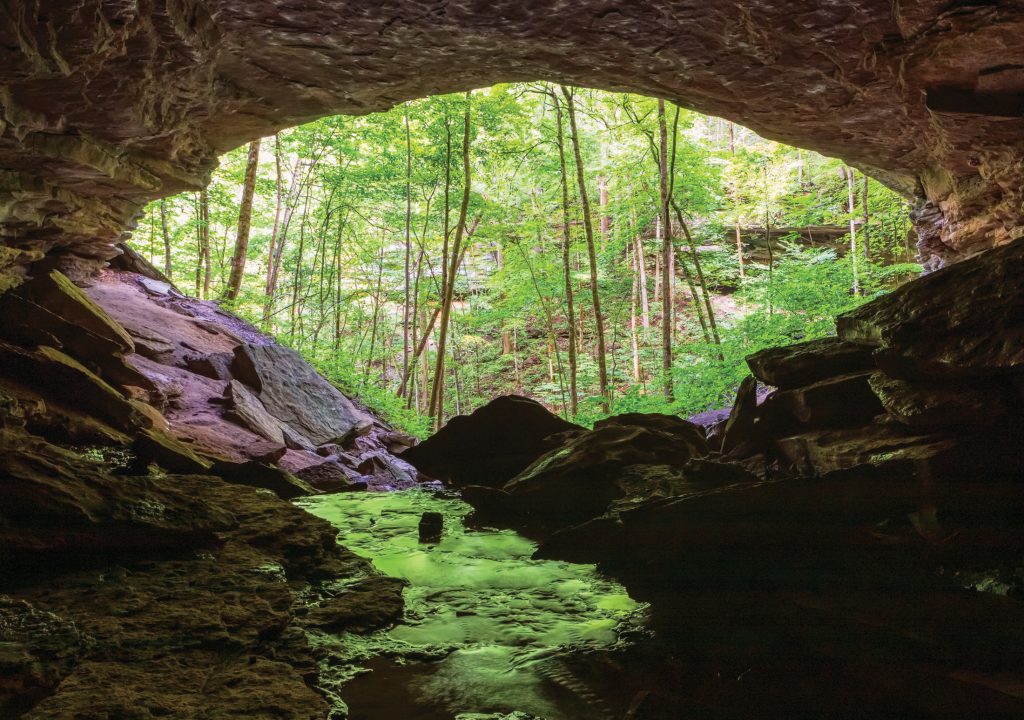“Bunkum Cave” by Robin Conover Canon 5D Mark IV EF 24–70 mm, 2.8 L lens at 24 mm ISO 640, fl18 at 1 second, Gitzo tripod
In my journeys through Tennessee State Parks, I often think of all those who have walked the trails before me. Hiking the well-worn trails, I wonder how these lands have changed through the centuries by acts of nature and the hand of man.
Hiking to Bunkum Cave in the Cordell Hull Birthplace State Park is no exception. Walking through the hardwood forest full of towering oaks, hickories and beech trees, I wondered how large their predecessors would have been before these hills along the Highland Rim were logged.
Approaching the cave, you can easily see what a perfect shelter it would have been for Native Americans and, later, long hunters and white settlers.
Located on the headwaters of Cove Creek, a spring-fed stream runs out of the cave year-round. In the 1870s, it’s said that Cordell Hull’s father made moonshine here.
As I entered the cave, sweating from the humid air of a hot summer day, I was instantly refreshed by the cool air inside. It’s easy to understand how this somewhat hidden entrance has been a respite for humans and animals for centuries.
The cave formation continues back for more than a mile with some very tight squeezes. Today, visitors who wish to explore the cave past the entrance light must have a permit from the state park’s office.
Looking back toward the entrance, which spans 100 feet wide and 50 feet tall, the beautiful light reflecting the green trees on the stream below caught my eye. I enjoyed the scene for about 30 minutes as I photographed several different horizontal, vertical and square compositions.
I couldn’t help but think about how many others have stood in this spot and felt the cool air, watched the trickling stream flow by and listened to the muffled calls of birds singing outside — how refreshing!



